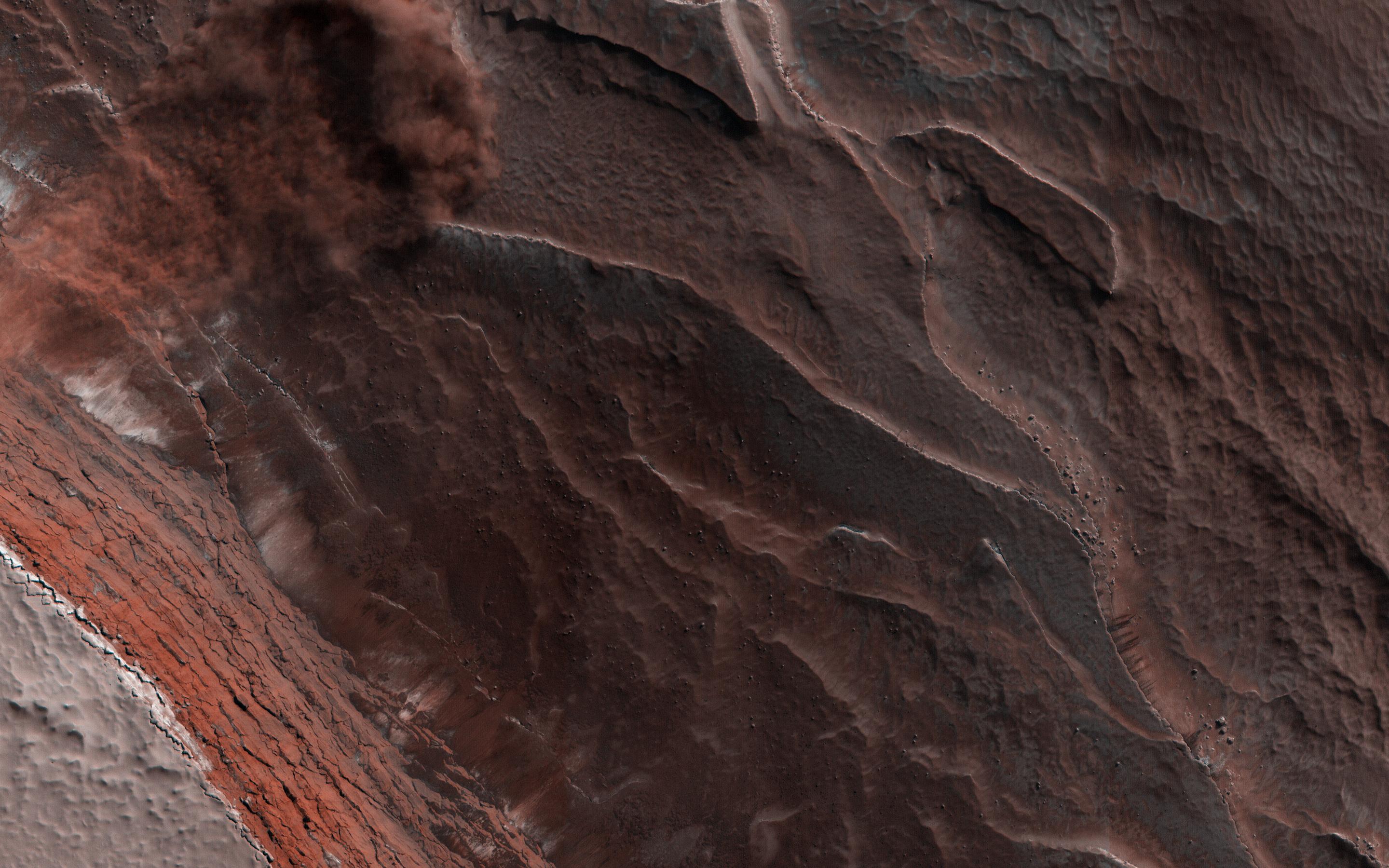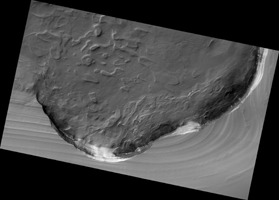
|
Avalanche Season
- Click the image above for a larger view
- Full-Res JPEG (2880 x 1800) (629.2 kB)
- Full-Res TIFF (2880 x 1800) (14.9 MB)
Caption:

Map Projected Browse Image
Click on image for larger version
Every spring the sun shines on the side of the stack of layers at the North Pole of Mars known as the north polar layered deposits. The warmth destabilizes the ice and blocks break loose.
When they reach the bottom of the more than 500 meter tall cliff face, the blocks kick up a cloud of dust . (In the cutout, the top layer of the north polar cap is to the lower left.) The layers beneath are different colors and textures depending on the amount of dust mixed with ice.
The map is projected here at a scale of 25 centimeters (9.8 inches) per pixel. (The original image scale is 32.0 centimeters [12.6 inches] per pixel [with 1 x 1 binning]; objects on the order of 96 centimeters [37.8 inches] across are resolved.) North is up.
Background Info:
The University of Arizona, in Tucson, operates HiRISE, which was built by Ball Aerospace & Technologies Corp., in Boulder, Colorado. NASA's Jet Propulsion Laboratory, a division of Caltech in Pasadena, California, manages the Mars Reconnaissance Orbiter Project for NASA's Science Mission Directorate, Washington.
Cataloging Keywords:
| Name | Value | Additional Values |
|---|---|---|
| Target | Mars | |
| System | ||
| Target Type | Planet | |
| Mission | Mars Reconnaissance Orbiter (MRO) | |
| Instrument Host | Mars Reconnaissance Orbiter | |
| Host Type | Orbiter | |
| Instrument | High Resolution Imaging Science Experiment (HiRISE) | |
| Detector | ||
| Extra Keywords | Color, Dust, Map | |
| Acquisition Date | ||
| Release Date | 2019-09-05 | |
| Date in Caption | ||
| Image Credit | NASA/JPL-Caltech/University of Arizona | |
| Source | photojournal.jpl.nasa.gov/catalog/PIA23453 | |
| Identifier | PIA23453 | |
